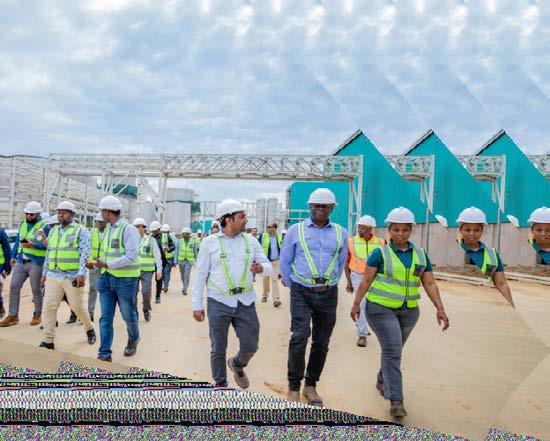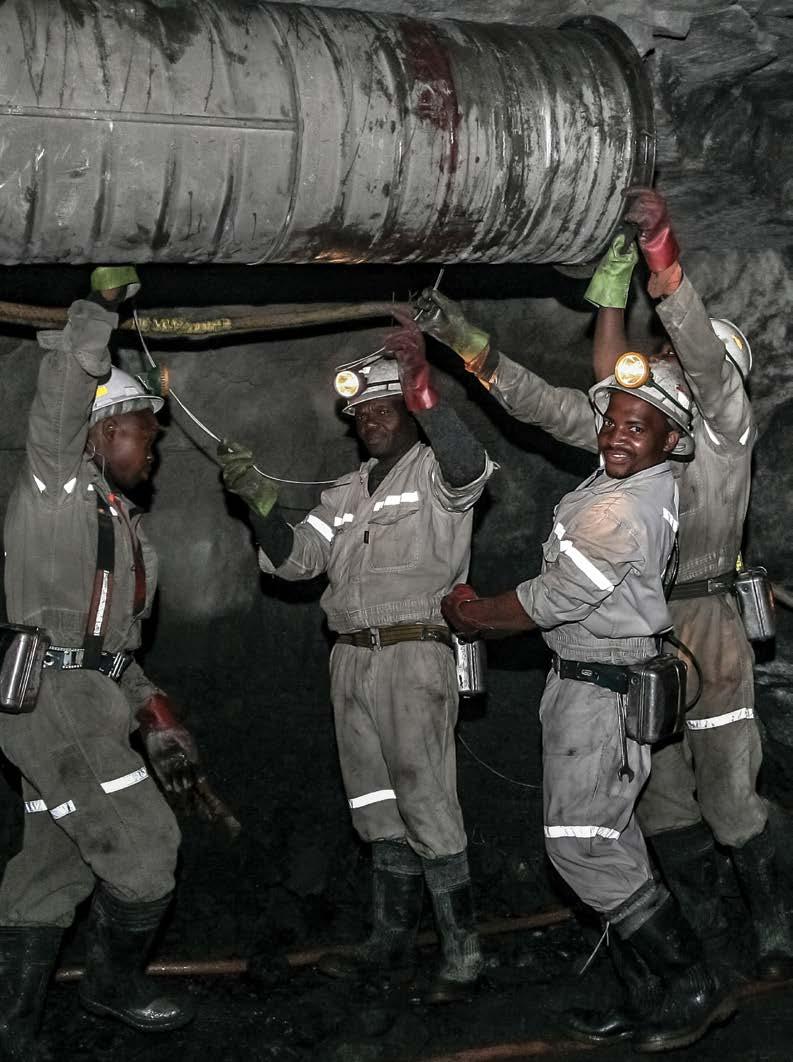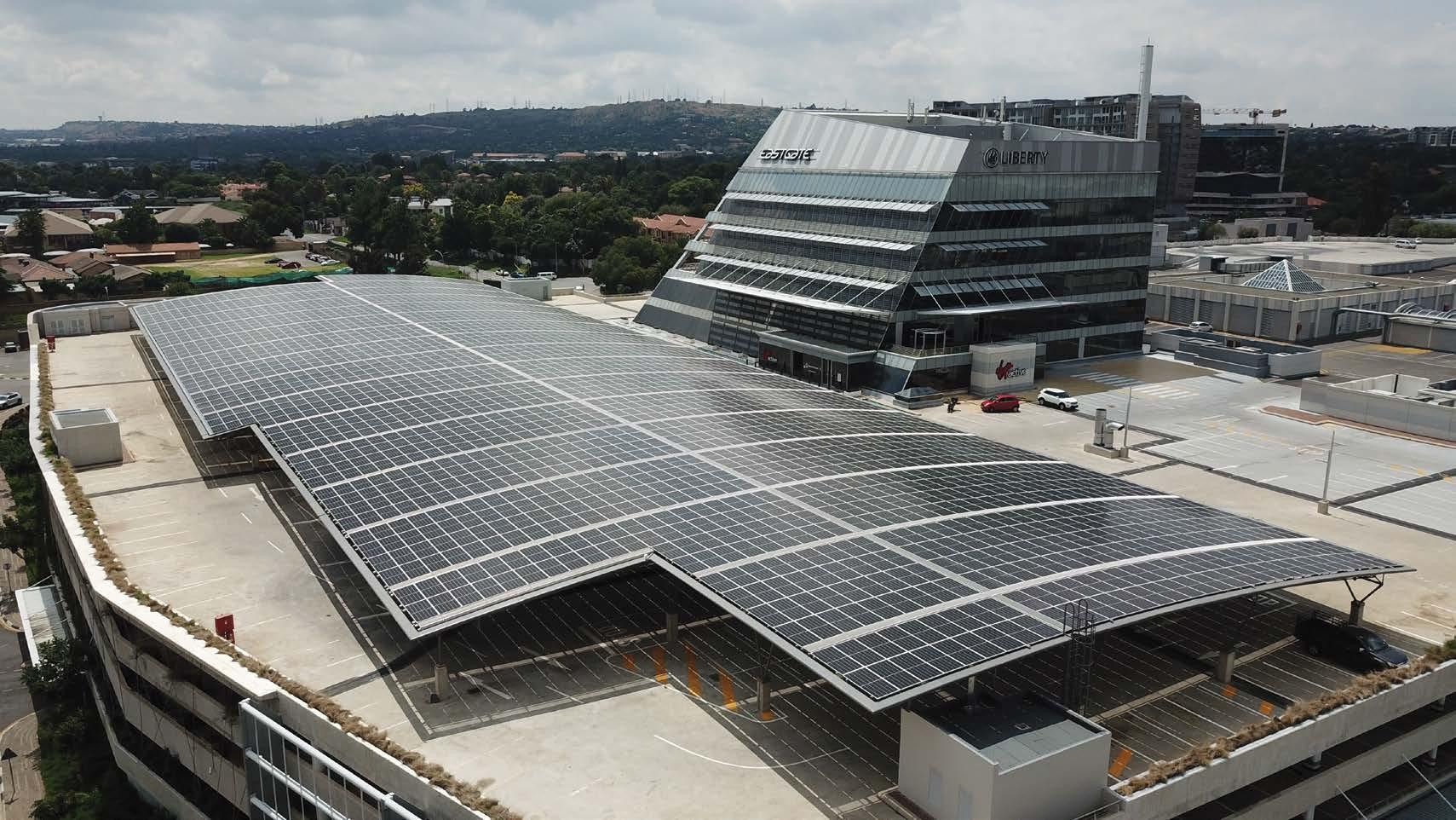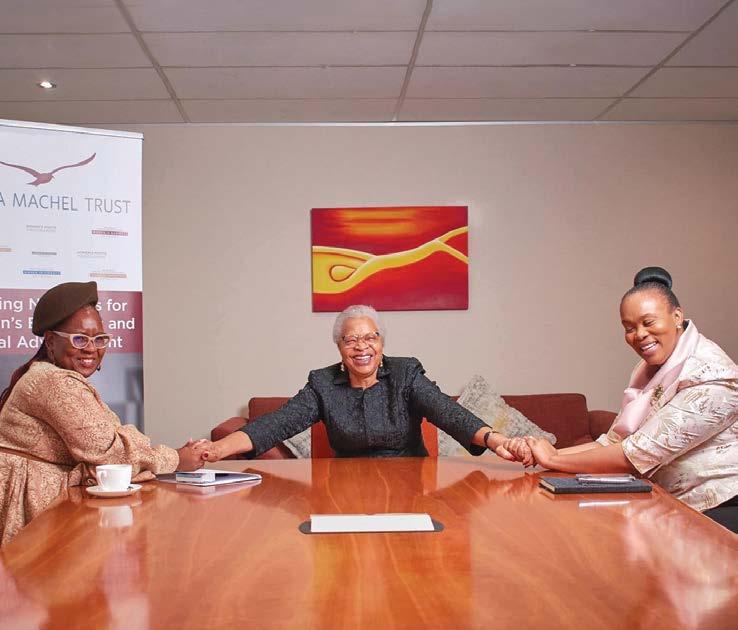








We're more than a company
We're a driving force that propels dreams into digital reality. -

Domains

Web Hosting
Web Design / Development
Search Engine Optimisation
Google Ads
Social Media Marketing
info@ixist.co.za

www.ixist.co.za

















We're more than a company
We're a driving force that propels dreams into digital reality. -

Domains

Web Hosting
Web Design / Development
Search Engine Optimisation
Google Ads
Social Media Marketing
info@ixist.co.za

www.ixist.co.za







Your car will benefit from the modern diagnostics at Bosch Car Service.

Troubleshooting, perfected - That dreaded knocking noise is getting louder and you can’t keep ignoring it. Rather than chancing it with some guy who works ‘by ear’, just book it in to a Bosch Car Service. Our expert technicians are trained to use state-of-the-art diagnostic equipment to quickly and accurately find the problem in even the most sophisticated vehicles. That way, you know we’ll get it sorted – first time, every time. Our workmanship is backed by a 6-month/10,000km guarantee for labour, and 12-month warranty on premium Bosch or OEM-approved parts.
Don’t let car trouble slow you down, visit www.boschcarsa.co.za to book your service or repair.
For everything your car needs.
































PUBLISHER
Elroy van Heerden-Mays elroy@mediaxpose.co.za
EDITOR
Tashne Singh editor@sabusinessintegrator.co.za
SUB-EDITOR
Jacky Dyer sub@mediaxpose.co.za
CONTENT MANAGER
Wadoeda Adams artwork@mediaxpose.co.za
DESIGNERS
Anja Bramley artwork1@mediaxpose.co.za
Shaun van Heerden-Mays artwork2@mediaxpose.co.za
EDITORIAL CONTRIBUTORS








PUBLISHED BY DISTRIBUTION Media Support | On the Dot

Tafadzwa Chibanguza
Paula-Ann Novotny
Zakhele Mthembu
Zaakir Mohamed
Dr Chris Blair
Ntombizone Feni
ADVERTISING SALES MANAGER
Rashieda Wyngaardt rashieda@sabusinessintegrator.co.za
ADVERTISING SALES
Siya Ngoni siya@mediaxpose.co.za
MEDIA PARTNERSHIPS | EDITORIAL ASSISTANT
Maurisha Niewenhuys maurisha@mediaxpose.co.za
DIGITAL AND SOCIAL MEDIA
Kyla van Heerden social@mediaxpose.co.za
Tia Arendse tia@mediaxpose.co.za
Temo Mpodi temo@mediaxpose.co.za
DISTRIBUTION & SUBSCRIPTIONS
Shihaam Gyer distribution@mediaxpose.co.za
CHIEF FINANCIAL OFFICER
Shaun van Heerden-Mays shaun@mediaxpose.co.za
ADMIN ASSISTANT
Ketsia Makola ketsia@mediaxpose.co.za
WEBSITE DEVELOPER/ADMINISTRATOR
Justin McGregor justin@mediaxpose.co.za
RECEPTION
Daniëla Daniels receptionist@mediaxpose.co.za

Nyanza Light Metals (Nyanza), established in 2011 as a project aimed at processing ilmenite and titanium slags, is constructing an 80 000 tonnes per annum rutile titanium dioxide (TiO2) pigment and chemicals manufacturing plant in Richards Bay Industrial Development Zone (RBIDZ). Donovan Chimhandamba, CEO of Nyanza Light Metals and Thabane W. Zulu, CEO of the RBIDZ, share some insights about this exciting project and the opportunities it brings.


Having spent over 13 years on feasibility studies and developing the project from concept, what would you say are the key takeaways on how to best position Nyanza Light Metals to successfully enter the global titanium value chain and become a key player in this sector?
Nyanza has been positioned to take advantage of the changed global manufacturing cost structures and address market gaps existing producers currently underserve. With Covid and the Ukraine-Russia war, we have seen massive de-industrialisation in some of Europe’s previously strong manufacturing regions. Because of this, the markets that used to be serviced by production from these regions will be looking to replace supply from a Nyanza. Africa is an important market for Nyanza, and Nyanza is well-placed to serve this market and benefit from the continental free trade agreements.


Nyanza has brought in the continent’s leading development finance institutions and an EPC contractor with the most experience in the world in building such plants."
Having completed phase one of the project –the Product Testing and Development Centre – tell us a bit about the plans for phase 2. The Product Testing and Development Centre (PTDC) is for market development work ahead of commercial production. The plant can produce sufficient product samples for customers to test performance at an industrial scale. This has enabled Nyanza to conclude offtake agreements that the funders need for phase 2 construction. The capacity of the PTDC at peak can be 840tpa (tonnes per annum).
Phase 2 involves the construction of the main production facility with a production capacity of 80 000tpa. The Nyanza plant will be the most modern plant in the world, with superior operating efficiencies regarding energy and raw material consumption rates. Our energy supply will draw from a mix of renewables and waste steam-fired co-generation power.
Phase 2 will cost R15 billion and will take 36 months to complete. Phase 2 commences in June 2024 with the RBIDZ starting the site preparation works, including deforestation, site clearing and levelling. During the construction period, there will be more than 3 000 jobs and opportunities for SMME’s to participate in supplying services and materials to the main contractor.
What are the benefits of setting up a titanium dioxide pigment manufacturing plant within an Industrial Development Zone?
We opted to set up Nyanza in the industrial development zone for many reasons. Some benefits include tax incentives, and support from the South African government with feasibility funding. Additionally from a location perspective, 85% of our production is for export and the zones have developed world-class infrastructure critical for operating such an industrial and chemical plant.
What is the expected economic impact of this plant once fully operational?
We have taken note that since 2016, there has been no production capacity for titanium dioxide pigment in Africa. Nyanza will be the only plant in Africa and will be technologically advanced.
That being said, the projects have a high economic and social development impact, including:
• Creating 3 000 construction jobs for three years.
• Creating 850 direct permanent jobs once construction is complete.
• Stimulating the local SMME supply chain and economy.
• Generating more than $300m in export revenues.
• Creating mineral beneficiation and value-addition industries.
It’s often been said that Africa as a continent loses a lot from an economic perspective as it frequently lacks beneficiation processes. Share your thoughts about this.
Africa has been primarily a raw material producer on many fronts. Titanium dioxide pigment is just one example of a raw material in Africa, which holds about 45% of the world’s reserves but has no value-addition capacity on the continent. The most significant barriers to setting up these plants have been capital, access to baseline infrastructure, and technical resources. Nyanza has brought in the continent’s leading development finance institutions and an EPC contractor with the most experience in the world in building such plants. This has significantly de-risked the project, and having it positioned in the RBIDZ, most of the baseline infrastructure requirements are available.
What are key learnings in starting a beneficiation plant, and how can this translate to other industries?
One of the biggest challenges is raising project preparation and feasibility funding. There aren’t enough funders willing to take such early-stage risk. So many projects fail to take off because they did not manage to complete bankable feasibility studies. Nyanza has spent over $25 million (R470m) on project development. If Africa is to develop more projects of the size of Nyanza, more project preparation funding is required from the financial markets.
Considering the progress of Nyanza Light Metals, what are some key takeaways for RBIDZ concerning unlocking industry opportunities?
As the RBIDZ, we are pleased to witness a project such as Nyanza progressing on our estate. This legacy project will transform the Richards Bay area and KwaZulu–Natal province into the Titanium Capital. It will also contribute significantly to the socio-economic landscape of the province while positively impacting the lives of our communities and business value chains. Moreover, the agglomeration of key industries that are operational in the area make it easy for the industries and investors to thrive.
For example, it is easy for incoming investors to create business linkages for product offtake or leverage on existing customers and stakeholders.
There is also a strong business case linking the potential export activity of the RBIDZ investors to the capacity of the Port of Richards Bay. The link to the port is a key defining characteristic of the Zone, as the intention is primarily to attract foreign export-oriented companies that will broaden South Africa’s basket of export products; and exchange skills and innovative technology to the local economy through their interaction within the value chain.
The availability of feedstock/minerals such as aluminium, heavy metals, iron ore, ferrochrome, various other chemicals, wood, pulp, paper, agricultural products, and coal offer numerous downstream manufacturing possibilities for investors.
In essence, we are executing our mandate as delegated.
Share your thoughts on how projects like these help create jobs and impact communities. Job creation to alleviate unemployment is one of the benefits compelling development in the area; however, exchange of knowledge and skills transfer are other vital components that leave a long-lasting impact as the communities can utilise such skills beyond the specific project.
Regarding the Nyanza, project, we are delighted to highlight that during the construction of Phase 1, which is the Product Testing and Development Centre, 286 people

were employed during construction, and to date, 40 operational jobs have been created.
The rollout of Phase 2, which is the construction of the leading production/commercial plant, will create even more jobs and widen the scope of value chain opportunities for emerging enterprises within and beyond the geographical location of this project.
Overall, RBIDZ targets operationalising R757 million investment projects in the 2024/25 fiscal year, while R8 billion projects are targeted to commence construction in the same year.
In accelerating and unlocking innovation/ industrialisation initiatives, what more is needed from a legislative, investment, resource and skills perspective?
1. Development of adequate multi infrastructure such as transportation, energy, telecommunications and logistics are vital for businesses to operate efficiently.
2. Provision of investment incentives will aid to support investors.
3. Implementing accessible and business-friendly regulations with reduced red tape.
4. Streamlining licensing processes and regulatory procedures.
5. Advancing collaborations between the government and private sector to unlock opportunities and create business linkages.
6. Driving skills exchange and transfer programmes to advance knowledge and innovation.





A look at the various metrics, including production, share of GDP and employment, shows that the outlook for the South African Metals & Engineering sector in 2024 is far from rosy, with local and global risks remaining high
The knee-jerk response to expecting the government to address the sombre outlook for the sector is naïve. A far more effective approach would be pursuing productive collaboration between the private and public sectors.
The sector faces a range of challenges in 2024 and beyond. Geopolitical risks include the ongoing conflicts in Europe and the Middle East. At the same time, locally, the sector faces persistent loadshedding, logistical challenges, wage negotiations, the uncertainty associated with an election year and deteriorating service delivery at the municipal level.
Aggregate production increased by 1.7% in 2023, slightly higher than the 1.5% in 2022 but still 18% below where it was in 2008/2009, according to the Steel and Engineering Industries Federation of Southern Africa’s (SEIFSA) State of the Metals and Engineering Sector Report 2024 that was released in February.
Employment has followed a similar depressing trend. The sector employed 2% fewer people in 2023 than in 2022, supporting Stats SA’s disheartening employment data showing a steady rise in

joblessness, with the official unemployment rate increasing to 32.1% in the fourth quarter of 2023.
The sector’s share of national GDP is down to 3.3% in 2023 from 3.6% in 2022.
Looking forward, global inflation is set to decline from 6.8% in 2023 to 5.8% in 2024 and 4.4% in 2025. Cooling inflation, which has been subsiding faster than expected, particularly in advanced economies, presents the prospects of hard currency rate cuts, planting the seeds for a favourable global monetary policy environment. The declining rates should result in increases in gross fixed capital formation from the sectors to which the metals and engineering sector supplies, which is critical to the sector’s fortunes. Moreover, declining rates will ease the pressure on debt-service costs, creating fiscal space, especially for Sub-Saharan African countries comprising the largest metals and engineering export market.

Net investment in the metals and engineering sector has been negative since 2008, which has resulted in the sector’s fixed capital stock deteriorating at a rate of 0.8% (CAGR) over this period. A declining interest rate environment improves the prospects for companies within the sector to invest in their operations, which is critical to their long-term success, sustainability and competitiveness.
However, with inflation rates still having a considerable distance to target, and with geopolitics continuing to present inflationary risks, this scenario is not expected to play out overnight but gradually; hence, global economic growth is likely to flatline into the medium term and, therefore, SEIFSA has factored in a neutral perspective on demand from outside the country.
A not-so-supportive external environment demands heavier lifting from the domestic economy. However, the downside risks to the overall outlook emanate primarily from the local environment. The impact of the electricity and logistics crisis is well documented as one of the most severe binding constraints hampering the growth potential of the metals and engineering sectors. Anything between 38% to 45% of the downside risks can be attributed to these constraints.
Moreover, an increasingly growing concern is the deterioration of service delivery at the local government level, which is the ‘last mile’ of service delivery. This deterioration has the impact of negating all the reform efforts in the earlier stages of the network industries. For example, with the provision of electricity, poor and deteriorating distribution negates all the progress being made in the energy generation and transmission segments of the value chain. Additionally, the distributed nature of municipalities makes resolving the problem more challenging. A problem with an electricity generation plant is determined at a single source point. In contrast, electricity distribution nodes range over the length and breadth of the country, meaning the problem is spread over an extensive geographical area.
"... policies must be passed that allow and encourage the private sector to take on a more prominent role in areas historically delivered by the state."
Private sector has the potential to positively impact
However, these unique dynamics of municipal services also offer better prospects for private-public partnerships. That is, the doorstep nature of the municipal services means that the problem that needs to be resolved is within clear reach of the affected parties. The services are on a smaller scale, meaning the size of the problem and, by extension, the solution is relatively more manageable. Lastly, the distributed nature of municipal services means that initiatives to resolve the problems are spread across a much wider pool of resources.
Better and more focused collaborations between the private and public sectors in this space, with the idea that “we are in this together”, could potentially open up numerous technical, capability, capacity and financial options. Corporates working in the respective municipalities have various administrative, managerial and operational skills that could be seconded to their local government to make a real difference in service delivery.
However, for this to happen meaningfully, policies must be passed that allow and encourage the private sector to take on a more prominent role in areas historically delivered by the state. To this end, a change of focus is required, one that acknowledges that the future of the metals and engineering sector is in our hands, and we all need to take greater responsibility for our immediate environments.
The closer to home the delivery service deficit is, the more responsible we are for fixing, managing and maintaining it. We cannot ignore the fact that local government is on our doorstep, and by putting service delivery in our hands, we create a system where everyone wins.

Mining companies are well acquainted with the tenets that underpin the social licence to operate. But as the globalised world places more scrutiny on human rights violations –reported within operational boundaries and across supply and value chains – mining companies may need to do more to demonstrate that they respect human rights.
By Paula-Ann Novotny, Senior Associate at Webber WentzelThe corporate duty to respect human rights, as entrenched by the United Nations Guiding Principles (UNGPs), is firmly in the spotlight. The UNGPs are the first global standard for preventing and addressing the risk of adverse impacts on human rights linked to business activity, and the internationally accepted framework for enhancing standards and practice regarding business and human rights (BHR). They recognise that States are the primary duty-bearers under international human rights law, and must, in the first instance, respect, protect, promote and fulfil human rights and fundamental freedoms. However,
with challenges and competing demands in various
Closer to home, South Africa's mining industry is faced with challenges and competing demands in various areas, which require a review of how risk and impact assessments are conducted: BHR methodology requires that a lens of 'risk to people' be adopted, as opposed to traditional 'risk to business' decision-making methodologies.
participation in development projects, where mining socio-economic
One such area is community engagement and participation in development projects, where mining companies must balance their legal obligations under environmental and mining legislation to support sustainable and socio-economic development; preserve host communities' rights to self-determination, cultural heritage and ancestral lands; and prepare and implement meaningful Social and Labour Plans against varying stakeholder expectations; international standards; and intersecting human rights. South Africa also continues to grapple with the legal requirements informing consultation vs consent, which must be assessed and locally contextualised to align with international expectations around Free, Prior and Informed Consent (FPIC).
the UNGPs also recognise an independent corporate responsibility to respect human rights, which exists over and above compliance with national human rights laws and regulations.
BHR has evolved beyond theoretical principles into tangible business practice. Geopolitical tensions, climate change-related crises, activist shareholders and increased stakeholder scrutiny of the daily practices and challenges in the extractives industry are among the factors which have contributed to heightened international expectations of corporate conduct.

is often expected that mining companies will step in. However, understanding the measures required of corporates under the UNGPs, as well as law, must inform the extent to which mining companies take on such responsibilities.
assessments are undertaken also sheds light on where
as a result. (Severity is the yardstick in BHR assessment
rights, contextualised by the climate crisis and
Another is balancing public and private duties in preventing adverse human rights impacts and remediating human rights violations. Where the government is seen to be failing in its duty to protect, promote and fulfil basic human rights in mining communities (such as the provision of access to water and sanitation, housing, and healthcare services), it
Another is balancing public and private duties in government is seen to be failing in its duty to protect, and sanitation, housing, and healthcare services), it
should implement to effectively prevent adverse
to understanding in-migration patterns and the labour
working conditions, fair treatment and fair pay.
Understanding how human rights risk and impact assessments are undertaken also sheds light on where multiple human rights may intersect, and how the severity of adverse consequences is likely to increase as a result. (Severity is the yardstick in BHR assessment methodology, as opposed to traditional corporate probability theory). Business impacts on environmental rights, contextualised by the climate crisis and indigenous uses of biodiversity, for example, may identify alternative measures that a mining company should implement to effectively prevent adverse consequences to host communities beyond adequate resettlement or closure practices. This is in addition to understanding in-migration patterns and the labour rights of migrant workers versus host community members in addressing employment opportunities, working conditions, fair treatment and fair pay.
Not only must corporate risk and impact assessment methodology be adapted to comply with BHR metrics, but mining companies must also recognise the evolving nature of corporate duties of care. While environmental and fiduciary duties of care are circumscribed by law, expectations and precedent are changing in light of the increasingly severe impacts on people and the planet, and how business activity may contribute to or influence them. The UK Companies Act now imposes an express requirement on directors to have regard to the interests of employees as well as matters such as reputation, the community, customers and suppliers, and the environment.
Several counsel opinions have also been published globally, advising that the scope of directors' fiduciary duties has expanded to include a duty to consider climate change impacts on and from the business.
Climate change has disastrous consequences on weather patterns, ecosystems and biodiversity, and these impacts directly and indirectly affect all human rights, including the rights to life, food, health and water. The impacts of climate change also exacerbate social and economic inequalities, disproportionately affecting people already in vulnerable situations including children, Indigenous Peoples and persons with disabilities. This invariably means that BHR must feature in corporate decisionmaking.
The time is now for mining companies to understand the import and application of BHR in their operations, business relationships and value chains..."

Governments in international jurisdictions are implementing and proposing legislation around supply chain due diligence and human rights due diligence. Courts are being asked to adjudicate varying business relationship contexts and the extent of corporate duties of care in light of the UNGPs. Laws, precedents and market practice are fast evolving.
The time is now for mining companies to understand the import and application of BHR in their operations, business relationships and value chains, not only to prevent significant risks from eventuating but also to embrace opportunities and positively exert their influence.
Mining companies can improve their implementation of the UNGPs by conducting corporate human rights risk and impact assessments and adopting governance systems and controls to ensure human rights are respected across business operations and relationships.



Welcome to the world of Probe Mining Group of Companies, a proud member of the Probe Group. We specialise in offering a comprehensive range of cuttingedge technologies tailored for the mining industry. Our core focus lies in providing Safety and Productivity solutions that revolutionise the mining landscape. With our end-to-end Digital Mine Operation Solutions, we empower mines with enhanced digital design and data analysis capabilities. Our integrated offerings encompass Operation Level 9 Collision Awareness or Collision Prevention Systems, bespoke safety solutions, air quality and gas monitoring, comprehensive alternative energy solutions, as well as specialised solutions for industrial, air, and power requirements. Additionally, we offer auto-electrical field services, off-highway vehicle (OHV) batteries, spares, parts, and expertise in Komatsu drive systems, OEM harness manufacturing, and electric vehicle conversions.
Probe IMT (Integrated Mining Technology) represents our dedication to providing integrated solutions and transformative processes for the mining sector. By investing in state-of-the-art technologies, we deliver secure and innovative solutions such as uptime and remote monitoring, enabling more efficient and accurate
mining operations. Leveraging the potential of Internet of Things (IoT), big data, and cloud computing, we empower mines to address resource challenges and environmental pressures. Our intelligent systems combine cuttingedge technology, skilled personnel, and streamlined processes to facilitate feedback loops, thereby defining an organisation’s competitiveness and shaping the industry landscape. We collaborate closely with our customers to design and manufacture tailor-made solutions that address challenges in the mining, construction, agriculture, marine, and industrial sectors.
Under our Industrial Technologies portfolio, we drive efficient industrial operations by providing high-quality air and power solutions. Our range of screw and reciprocating piston compressors ensures optimal performance while delivering substantial energy-saving benefits. We offer industry-leading power transmission products, including SITI gearboxes, electric motors, Eaton Airflex, and Nexen industrial pneumatic clutch and brake solutions. Partnering with a material handling company, we have expanded our offerings to include electrical forklifts and EV technology, along with associated charging systems. Additionally, we offer a diverse range of batteries to support the material handling segment.

As an experts in the automotive industry, Probe is renowned for supplying the Complete Power Package, with a strong focus on batteries, starters, and alternators. We proudly represent world-class battery and branded auto-electrical component OEM brands, including Borg Warner (Delco Remy), Prestolite (Leece-Neville), CE Niehoff, and Horton. Our commitment to importing and distributing the latest battery technologies makes us a leading supplier in the Southern African region.
Embracing sustainable energy solutions, Probe has ventured into alternative energy technologies such as lithium batteries and supercapacitors.
Our Probenergy division offers a range of highquality and affordable power solutions for various applications, including solar, backup systems, UPS, industrial, marine, and telecommunications. Our portfolio extends to inverters, solar kits, next-generation battery chargers, and boosters.
Partnering with international manufacturing plants, we import diverse best-of-breed technologies to cater to different market needs.

At the Probe Mining Group of Companies, we prioritise environmental sustainability and consider it a fundamental element in all our planning and development efforts. As an evolved mining organisation, we are committed to guiding social, environmental, and economic sustainability. We are proud partners of the Mandela Mining Precinct’s Real-Time Information Management Systems (RTIMS) research programme, which aims to improve data sourcing, transmission, storage, dissemination, and information management tools and practices for mines. Excellence through integration is at the core of our approach. All Probe Mining Group products and solutions are proven leaders in their respective fields, serving the mining, construction, agriculture, marine, and industrial sectors. We are actively exploring the realm of Digital Analytics, with the ultimate goal of consolidating productivity and safety.
South Africa’s construction industry ranks among the top contributors to GDP and employment in the country, making it as crucial to the economy as it is to the country’s physical expansion and advancement. It is vital for sector participants to have an idea of what to expect from the industry in the next year.
The Gap Infrastructure Corporation (GIC) – a leading South African infrastructure development company with operations throughout Africa – predicts mostly positive trends for the construction industry in 2024.
Roelof van den Berg, CEO of GIC notes that, “The construction sector faced some challenges over the past year as it continued its slow recovery from a severe drop in investment and project allocation during the Covid-19 pandemic and lockdown period. The industry was further beset by global supply chain disruptions caused, in large part, by the ongoing wars in Ukraine and Israel.”
He adds, “However, 2023 continued the positive growth trends from the past couple of years, giving cause for optimism as we kickstart 2024." He predicts that three trends will take centre stage in discussions about the industry’s growth in the year ahead:
When determining the industry’s future growth potential, previous market trends from the past couple of years should be taken into consideration.
Owing to global challenges such as rising interest rates and heightened geopolitical tensions, the South African economy and the construction sector came under some pressure.
At the same time, it is important to note that despite a difficult macroeconomic environment, the industry fared relatively well in 2023 compared with 2022, as South
Africa gradually recovered from the impacts of the pandemic. Statistics South Africa estimates that the construction industry added some R332 billion to the local economy between January and September 2023, compared to R324 billion in the same period in 2022. While the final quarter’s GDP results have yet to be released, this demonstrates a positive upward trajectory.
“As for 2024, continuing in the same vein, we expect to see a gradual increase in project allocation and investment in construction in line with the steady growth we’ve been experiencing, ” van den Berg says.
INCREMENTAL
As with GDP growth, the industry saw some growth in sector employment last year. By the end of the third quarter of 2023, construction employment had increased by 11% year-on-year. GIC predicts that this trend will continue as construction companies rehire workers that the industry lost following the pandemic lockdowns.
It is worth noting that the sector employed 1.2% more women in 2023 than the previous year, indicating a positive trend for more women and diversity in construction.
“The number of women working in the construction sector is still fairly low, but we’re seeing more young women, especially, develop an interest in construction work, particularly in the engineering fields,” adds van den Berg.
“As more women in the field inspire others to follow in their footsteps, we hope to see a snowball effect. We also believe that awareness efforts by companies such as GIC to encourage more women to join the engineering and construction fields will continue to pay off in 2024, with new graduates beginning to enter the workforce.”
The industry itself will change considerably due to advancements in artificial intelligence (AI) technology. GIC has already invested in and developed its own AI, and van den Berg predicts that more large companies will utilise this technology in 2024 to identify and manage construction risks, including financial and physical onsite risks.
AI algorithms have the ability to analyse vast amounts of data and predict cost overruns, delays, or on-site safety issues, and propose preventative strategies that may be included in the project planning phase. AI can also be incorporated into the planning and design stages to optimise designs and lower costs, increase efficiency
and maintain a high level of sustainability throughout the project’s lifecycle.
As the technology becomes more prominent, more AI models with specific case uses will be developed in 2024. The construction industry is ideally positioned to benefit from this advancement in terms of fourth industrial revolution modernisation.
“The sector is in a period of slow but steady growth. We are consistently rebuilding industrywide while creating more job opportunities and attracting more investments into new projects. This is even as we continue to adapt and improve the way we plan, engineer, and construct new buildings and infrastructure.
“The industry, by every indication, should grow considerably stronger over the next year, which means that there will be many opportunities for both large and small businesses to benefit,” he concludes.
"The industry itself will change considerably due to advancements in artificial intelligence (AI) technology."

Operating cost efficiencies and safety – both driver and vehicle – are primary considerations for any logistics or freight company, and Unitrans, a forward-thinking company dedicated to providing value-added supply chain solutions across the continent, moves this to a new level with the launch of its newly upgraded Centre of Excellence (COE).
“The launch of our upgraded COE marks a significant milestone for Unitrans and the industry as a whole," says Jacques Greeff, Executive of Solutions at Unitrans. “We are thrilled to unveil this state-of-the-art facility that will drive value creation and operational excellence for our clients across Africa."
The modern supply chain is driven by “big data” with information coming directly from trucks on the road, fleet management systems and other services. The COE collects and analyses this data and provides real-time solutions and information to all relevant departments and drivers on the road – for example, instant route changes to avoid traffic jams.
"We believe that the future of supply chain management lies in the integration of data-driven insights and advanced technology."

By harnessing the power of technology through the COE, Unitrans can process large-scale data into actionable business intelligence.
“Our focus is on empowering our clients with real-time insights and predictive analytics that drive informed decision-making and enhance overall operational performance," remarks Greeff. “Through our centralised platform and data-driven approach, we are unlocking new possibilities for supply chain optimisation and cost efficiency.”
Unitrans is committed to developing bespoke solutions to provide optimal customer results. The company’s commitment to excellence extends beyond technology and data analytics. Its industry experts bring a wealth of experience and knowledge to the table, ensuring clients receive best-in-class solutions tailored to their specific needs.
“We believe that the future of supply chain management lies in the integration of data-driven insights and advanced technology," continues Greeff. “Our COE is designed to be a game-changer, offering our clients a competitive edge in a rapidly evolving marketplace."
Greeff describes the COE as an enabling tool that serves to optimise operations, mitigate risks and enhance safety and security measures –ultimately contributing to the increased efficiencies of its customers’ supply chains. Some tangible benefits of the COE include fleet optimisation, reduced standing times and overall vehicle efficiency. While none of these concepts is new, the Unitrans COE uniquely balances risk mitigation imperatives and efficiency targets with sustainability objectives.

Predictive analytics means leveraging historical and real-time data to forecast future outcomes. Businesses can gain valuable insights into patterns, trends and potential risks by analysing large-scale data sets, allowing them to make informed decisions and mitigate operational challenges effectively.
In the context of a logistics business, predictive analytics can revolutionise risk management practices by identifying potential issues before they escalate, reducing operational risks and improving operational cost efficiency significantly.
Through the continuous analysis of data related to factors such as weather conditions, traffic patterns, equipment maintenance and driver behaviour, transport and logistics companies can proactively address potential problems and optimise their operations for efficiency, safety and sustainability.
“Ultimately, with the integration of advanced predictive analytics tools and large-scale data analysis, it is conceivable the supply chain industry could not only reduce operational risks, but potentially eradicate them,” says Greeff.
This transformative approach can improve supply chain businesses' operations, ensuring smoother operations, enhanced safety standards, and, ultimately, a more sustainable and reliable supply chain ecosystem.

Global growth is expected to be subdued, if not stagnant, in 2024, and amidst this slow growth and some of the challenging market conditions, international trade is also expected to be sluggish. In fact, according to The World Bank, global trade growth in 2024 is anticipated to be only half the average in the decade before the pandemic.
“We expect this year to be quite volatile,” says Denys Hobson, Head of Logistics at Investec. “Inflation globally has been coming down and the market consensus is for interest rate cuts to come into effect later in the year, GDP growth is still muted. Added to this, current geopolitical tensions are high. While these tensions currently only have a direct effect on certain regional trade routes such as EuropeAsia, should they escalate, it certainly can destabilise global trade and supply chains in many ways.”
The military strikes in the Red Sea have delayed sea freight cargo in transit, and subsequently, companies impacted have had to airfreight additional stock to compensate for the sea freight delays. This pushes up the demand for airfreight, and with increased demand, the airfreight rates also increase. This leads to higher landed costs. Sea freight costs also increase on trades affected by the current Red Sea situation because shipping lines have diverted their vessels around the Cape of Good Hope, increasing their transit times and costs and reducing their capacity and equipment availability.
As Hobson points out, “2024 is also an election year for more than 50 other countries and we know that this can create uncertainty in various forms such as investments and policy, but it also can bring about positive sentiment depending on the respective outcomes.”
Hobson also mentions that weather patterns are becoming more volatile and extreme, a factor which may impact global capacity and routes. One only has to examine the recent drought in Panama to see the impact of climate change on global trade. “If we start to get significant increases in weather events for extended periods, we may experience disruptions to supply chains.”
From a South African perspective, the biggest concern is the efficiency of ports and rail infrastructure.
“If sustainable progress doesn’t get made soon, we may see further route and capacity changes on the South African inbound and outbound routes as it has
become too expensive to have vessels stuck in ports for days and weeks,” says Hobson. “Shipping lines could utilise their capacity more effectively on other trades if required. We may even see some remove direct sailings or only have limited sailings coming into South Africa; this will reduce available capacity and increase freight rates”.
The rand is expected to remain under pressure, and with ongoing concerns around Transnet and loadshedding, investor confidence remains muted. Moreover, it’s a big election year, which may cause some uncertainty.
“While much is underway at Transnet to improve performance across multiple areas, rail is still not expected to operate efficiently this year, and is likely to be a hindrance to the industry and South Africa’s economic growth,” adds Hobson. “To get it where it needs to be, with tangible change, requires substantial collaboration across private and government sectors, as rail and ports need to work together to achieve meaningful change and progress. This calls for clear policies, transparency, investment, and decisive leadership.”
“Generally, given the last few years, we should be able to adapt much more quickly to supply chain shocks – learning from past lessons and adjusting to disruptions. However, importers need to be cautious; they need to watch their costs closely, adjust lead times where required and examine ways of ensuring that their working capital is utilised effectively. Financial discipline is crucial, and market conditions will eventually become more buoyant, which will open additional avenues and opportunities for growth both locally and abroad; they need to be able to take advantage of these.”
Hobson’s advice: close collaboration with your key supply chain stakeholders and financial partner(s) is essential. You should have a clear understanding of changes to market and industry conditions and the impacts these could have – they do present opportunities. Plan effectively for scenarios that could pose a risk to your business.

Gerotek Test Facilities (Gerotek), a subsidiary of Armscor SCO, is an internationally accredited multi-disciplinary facility offering various ISO 17025 accredited tests. The facility primarily aims to meet South Africa’s needs in the testing of defence-related and commercial vehicles and products.
Gerotek’s well-maintained facilities are located just 20km west of Pretoria in Gauteng Province, a 520ha site designed and built to international standards to offer unparalleled technical and service excellence to local and international markets.
Gerotek offers world-class ISO-accredited and certified facilities and services that can be used by both local and international clients to test and evaluate the performance of their vehicles and products. Services are designed to cater for the exact requirements of clients and to meet and exceed customer expectations.
• Vehicle and Product Testing – Gerotek offers ISO 17025 accredited testing that adheres to international standards to promote repeatability and accuracy of tests. Gerotek offers a broad range of Vehicle and Product Testing services including vehicle characterisation, endurance, evaluation/qualification of electronic, electrical and mechanical systems and components; fatigue testing and analysis, electromagnetic compatibility, antenna testing, etc.
• Advanced Driver Training – Gerotek’s Advanced Driver Training focuses on safe driving practice in a controlled environment under expert supervision. Training interventions on offer include Defensive, Advanced, High Performance, Offensive and 4x4 Driver Training. Gerotek Advanced Driver Training offers TETA and SASETA accredited and other non-
credit bearing driver training courses.
• Facilities hire – Gerotek’s well-maintained venue is suitable for both work and play. It is a unique venue for conferences, product launches, seminars, teambuilding activities, exhibitions, on- and off-road test tracks etc., and also features an accredited shooting range. Gerotek Facilities are ISO 14001 and ISO 45001 certified.
• Events, Recreation and Conferencing – Gerotek’s Event services are tailored to unique client needs, suited to enable corporate clients to get down to serious business in the conference venues and then have fun outdoors as they take advantage of the many recreational pursuits it offers.
• Restaurant and Catering – The African-themed Sidibane Restaurant venue offers excellent catering facilities suited to any occasion, from a relaxed cocktail party or a spit braai to more formal events.
Contact us for more information
Tel: +27 (12) 371 2000/2065/2059/2052
Cel: +27 (82) 800 5932
Email: info@gerotek.co.za
Web: www.armscor.co.za
GPS: S250 45’ 515” | E280 00’ 522”





Buhle Hanise, with a wealth of leadership experience in the finance sector, embarks on a new chapter as Head of Business Restructing within BDO Advisory at BDO South Africa.
BUHLE HANISE | HEAD OF BUSINESS RESTRUCTURING WITHIN BDO ADVISORY AT BDO SOUTH AFRICA

How has your experience prepared you to take over as Head of Business Restructuring within BDO Advisory at BDO South Africa?
I had a fantastic portfolio of interesting clients because they were large corporates, which gave me great experience. I gained invaluable experience in all businesses and industries in South Africa, which prepared me for my current role by giving me a practical understanding of how companies work from the ground up.
What have been the key lessons you’ve learned on your growth journey?
My career journey has been building with each step to
get to where I am today, because I started my career in financial services and strategising how to restructure finances in the most innovative ways to optimise operations. Now, I am on the other side, and that experience helps me guide clients towards a more financially sustainable future.
What are common challenges you’ve faced, and how you have overcome these?
One of the challenges many companies face is that their internal skill sets aren’t diverse enough. By bringing my team on board, we can open doors they may not have considered and find alternative opportunities. My experience has taught me never to put all your eggs in
one basket, and I know how to empower organisations to explore sustainable ways to get back onto their growth journey.
How has being a woman in a leadership position informed your business practice?
Although female leadership is on the rise in South Africa, the country still has much work ahead regarding gender equality. This work is driven by strong female role models who refuse to give up, and inspire the country’s younger female generation. Being a leading role model for future generations has always been an imperative for me. Even in the early stages of my career I always considered myself a leader because as you progress, you must learn leadership qualities such as patience, empathy, confidence and interpersonal skills from the diverse pool of people and cultures you encounter. My leadership qualities grew on my journey and have prepared me to be where I am today, guiding others on their journeyboth as a leader of self and people.
What unique attributes do you bring to the table for this position?
When women become leaders, we provide different skillsets and imaginative perspectives. Modern workplaces have evolved from their historic structures, with greater emphasis on the need to prioritise qualities like listening, empathy, communication and approachability among top-tier leaders. More importantly, female leaders bring structural and cultural differences, which drive effective solutions. This creative approach and unique sense of awareness also allow us to study and uncover the finer, more nuanced details that may go unnoticed by others.
During your time as COO, what were your most outstanding areas of impact in developing the division?
Adding value to both the internal team and to clients. My ability to adapt has also impacted the way we worked together – we must learn to move with the times and adapt to doing things as the world around us does.
My experience has taught me never to put all your eggs in one basket, and I know how to empower organisations to explore sustainable ways to get back onto their growth journey."
What are the most significant adjustments from being the COO of Business Restructuring within BDO Advisory to heading up the division?
Over the years I have learned not to take action that will just benefit my division; it is the benefit to my clients that counts the most.
I have also learned that there are more external factors that you need to consider when you are running this kind of division and handling these kinds of future outcomes.
That being said, my new role isn’t entirely different from my previous one. The majority of the work will be analysing the financial status of companies. Every business is started up to make a profit. The minute it makes a loss, you have to worry. My job will be to think about how to turn those losses around and improve the revenue line to ensure the business is sustainable.
I’ve never been just a debit and a credit person; I’ve had to become a marketing specialist and understand the nuances of production, equipment, and operations and how these roles all fit together. I’ve had to develop myself consistently, which has given me the knowledge to develop my team in niche areas and the ability to go back to basics when necessary.
What key areas are you looking to develop in your new position?
I need to focus on the basics to begin with – I am passionate about this. This starts by ensuring that we collaborate well as a team because this will bring value and results.
I also think that we should be looking outside of South Africa, to the rest of the African continent, and joining in conversations, conferences and discussions. This will create opportunities for talking to some of our counterparts across the continent, which will help to extend our footprint all over Africa and accelerate our growth exponentially.
Is it fair to say that businesses often see business rescue and restructuring as a last resort? If so, what are the challenges with this? We have found that often, business rescue practitioners keep companies in rescue mode for no good reason,
and we’ve always shied away from that. Instead, we collaborate with businesses to ensure that people understand that business rescue shouldn’t be regarded as a last resort, but rather an opportunity for the organisation to take a breather and be guided along the journey of a reset in a more structured way.
Many are worried that the company will be put into liquidation. However, if we know there’s still potential in the business, we work with the organisation to protect it by preparing a forecast and guiding them along the way.
The challenge is that business rescue is often misconstrued as the ‘slow death’ of an organisation, and I would like to change that narrative by educating my clients that a solid strategy, together with ongoing support and guidance, can mean that their business not only survives but ultimately thrives in the long term.
How has your experience as a CFO – being on the other side of the business, so to speak – helped you understand what organisations require regarding salvaging a business? It is important to establish upfront whether a business is salvageable before considering anything else.
Being on the other side as a business manager gives me that understanding. It has also helped me see that, with the right type of advice and support, enterprises can handle the challenges thrown at them.
Considering the realities over the past few years – load shedding, sluggish economy, for instance – how has this impacted the perception and the value of having a rescue and restructuring partner?
Restructuring should be the trend right now. After such an incredibly tough and trying time financially, every business needs support – even if it’s just simple advice and guidance.
With the landscape we have at the moment in the country, we have no idea how businesses are going to be impacted in the future, and having someone to help with some of the most fundamental decisions could mean the difference between standing still or moving forward.
How do you envision the role of business restructuring partners holistically evolving?
How do you see your new role playing a critical part in this?
I have absolutely no doubt that the role of a businessrestructuring partner is evolving – and at a rapid rate. The well-known South African proverb, “If you want to go fast, go alone, if you want to go far, go together”, has never rung truer than in today’s business landscape.
Organisations should be seeing restructuring practitioners as an extension of their business. You wouldn’t operate without a CFO or a risk team. Why operate without optimising internal restructuring?
Coming in fresh is always a good idea because there is no room for growth when a business is stuck in its old ways.
She began her career in accounting in 2005 after which she progressed to becoming a Credit Manager, Senior Business Rescue Specialist & Team Leader, and Chief Financial Officer prior to joining BDO South Africa.
Hanise serves as the Non-Executive Director for multiple organisations including OUTsurance Holdings. She is the Board Chair of Summit Africa Private Equity and an Investment committee member of Mahlako Fund Financial Services.
Hanise's accomplishments also include being the President of the African Women Chartered Accountants (AWCA).
She holds memberships at the South African Institute of Chartered Accountants (SAICA), the Institute of Directors in Southern Africa (IoDSA), the International Women’s Forum South Africa (IWFSA), and South African Restructuring and Insolvency Practitioners (SARIPA).

Elevating people.
Elevating business.
Elevating society.

Our Business Restructuring Division provides peace of mind during tough and challenging times. When your business is facing a restructure or a dire financial crisis requiring business rescue, insolvency, legal and corporate recovery intervention, our experts will help you navigate all critical business processes.
Our specialised services include:
X Restructuring and Business Recovery
X Business Rescue
X Independent Business Reviews
X Turnaround Management
X Liquidations and Insolvencies
Our Business Restructuring Division has hands-on experience in executing restructuring and reorganisation activities across multiple jurisdictions. Let us assist you with the strategic direction you need as you navigate your business back to where it should be.
For a Clear Perspective please contact us:
HEAD OF BUSINESS RESTRUCTURING
Buhle Hanise
bhanise@bdo.co.za
T 083 364 0797
BUSINESS RESCUE & ADVISORY SPECIALISTS
Dawie van der Merwe
dvandermerwe@bdo.co.za
T 083 444 5026
Christopher Rey crey@bdo.co.za
T 072 287 9875
INSOLVENCY SPECIALISTS
Anneke Barnard
abarnard@bdo.co.za
T 082 448 9846
Rynette Pieters
rpieters@bdo.co.za
T 082 376 9690




FASSET is the Finance and Accounting Services Sector Education and Training Authority, a Schedule 2a skills development entity mandated by the Ministry of Higher Education, Science, and Innovation. FASSET delivers skills development interventions towards transforming the finance and accounting services sector.
FASSET’S WORKPLACE SKILLS PLAN (WSP)/ ANNUAL TRAINING REPORT (ATR) SEASON IS NOW OPEN FOR SUBMISSIONS. SUBMIT YOUR WSP/ATR FOR 2024/2025 AND BE PART OF BUILDING A LASTING LEGACY IN THE FINANCE AND ACCOUNTING SECTOR.
SUBMITTING YOUR ANNUAL WSP/ATR ALLOWS YOU TO CLAIM UP TO 20% OF YOUR SKILLS DEVELOPMENT LEVY (SDL) FROM FASSET UPON SUCCESSFUL APPROVAL.
SKILLS DEVELOPMENT IS ONE OF THE KEY ELEMENTS ON THE BBBEE SCORECARD AND THE MOST BENEFICIAL WHEN IMPLEMENTED CORRECTLY. ALIGNING YOUR WSP/ATR TO YOUR BBBEE COULD BE CRITICAL TO GAINING 1 TO EVEN 2 BBBEE LEVELS.


Submitting ensures compliance and unlocks financial benefits that can drive growth and success for your organisation through various FASSET funding interventions. These are some of the funding interventions your organisation may be eligible to apply for in future:
1. Learner Employment Grant
The LEG incentivises employers to place learners in a FASSET registered learnership and retain them for the required duration of the learnership. This can only be claimed by registered non-levy payers (NLPs) and levy payers with approved WSP/ATR in the finance and accounting sector.
FASSET funds various professional body programmes towards attaining a professional body designation, and the programme supports the employees of organisations within the finance and accounting sector.
4. Training Incentive Grant
FASSET incentivises employers within the finance and accounting sector who have trained their employees on training topics that address the FASSET Sector Skills Plans.
3. Internships
FASSET incentivises employers to place unemployed youth in an internship programme and retain them for at least 12-24 months.
5. Employed skills programme
FASSET funds employers within the FAS sector by helping them enhance the skills of their employees, allowing them to stay current and effectively adapt to the constantly changing business environment.

Stanley Grau, Founder and Managing Director of MSCT BEE Services shares insights into how companies can work with B-BBEE to achieve impactful change as part of sustainable growth.
The cost of compliance. With many legislative requirements, there is a cost, whether in the form of an imposed tax or levy or simply an outflow of money to achieve compliance. If seen from this angle, then yes, compliance can be expensive. However, compliance can be relatively inexpensive if respect and attention are given to the objectives of the B-BBEE Act and how a company can achieve these objectives within its day-to-day business operations. As a result, companies can achieve compliance and feel good about the positive changes they make while attaining it.
Another misconception is that B-BBEE doesn’t really help the measured entities create meaningful or sustainable relationships with their beneficiaries and are only “doing it for the points”. It is important to note that relationships are extremely important in achieving a level of sustainability in B-BBEE. In many cases emphasis is given to the employees and owners or beneficiaries, but the actual measured entity is forgotten. The purpose is also to safeguard the measured entity, and to allow the measured entity to form new relationships outside of their common business relationships which are fruitful, of value to them and yes get them those points.
the relationship between the SMME and the Large Enterprise, allowing both parties to engage in a working relationship that is both sustainable and profitable. Sometimes, too much focus is given to the employees, the owners and the beneficiaries, and more attention should be given to the actual relationship between the measured entity and the beneficiary. Consulting services can drive this relationship. Once a company is profitable, it will achieve long-term sustainability. With this comes the opportunity to focus on other areas within the B-BBEE scope, such as job creation, skills development, community upliftment, support and ownership. Consulting services help companies reach this comfortable state more sustainably and streamline the process to each entity’s specific needs.
Sometimes, too much focus is given to the employees, the owners and the beneficiaries, and more attention should be given to the actual relationship between the measured entity and the beneficiary. Consulting services can drive this relationship."
What are the key challenges businesses face concerning B-BBEE?
Misrepresentation and fronting practices are two of the biggest challenges in the industry and could easily negatively impact an entity’s verification, and the result reflected on its scorecard. Entities seeking to engage with professionals in the B-BBEE industry need to do their due diligence. Ensure that whoever you work with is registered with a professional body such as the Association of BEE Professionals (ABP, SAIPA, SAICA, etc). This ensures that they are regulated in some way. Good corporate governance and professional conduct are crucial in this industry and allow companies to have confidence in the B-BBEE legislative framework.
What are the benefits that businesses can unlock by engaging the services of B-BBEE consulting services?
Consulting services can offer entities cost-effective and meaningful initiatives that serve a longterm relationship rather than a short-term, costly compliance status. Emphasis should be placed on
Tell us a bit about transactional B-BBEE vs transformational B-BBEE. What is the trend in SA, and what is its impact?
The question is whether B-BBEE should follow a capitalist or Bata-based approach. It should be the latter, whereby entities that have achieved a level of compliance should be able to negotiate further terms as their initiatives drive change and transformation. Is it, therefore, Transactional or Transformational? This opinion I leave to the readers.
What are some B-BBEE trends and changes that can be expected in 2024?
Clarity. Every 4-6 years, the legislative framework and policy will change to incorporate further amendments or give additional guidance on achieving the Act’s objectives. It is essential to understand each stakeholder’s position in ensuring the successful impact and application of the Act. 2024 will be a year of clarity, and I expect future amendments to the legislation to give us more of this.
Businesses are investing in ESG. What are the benefits of potentially linking ESG and B-BBEE goals?
All initiatives undertaken in the journey to B-BBEE compliance should be in the form of achieving the three pillars of ESG. These are the environmental, social and good corporate governance/ethics. Achieving these three goals in any business makes the difference between sustainable transformation, which becomes a long-term benefit, versus a costly short-term level of compliance.
Considering realities such as high unemployment rates, skills capacity, and digitisation, what actions are required to enable B-BBEE to be implemented more efficiently to address the challenges SA faces?
Implementation of control and consistency across the board is integral. The B-BBEE industry is very similar to the legal and financial sectors. Within these sectors, we acknowledge and identify professional regulators. Regulation is desperately needed within the B-BBEE compliance industry.
Consistency in the application and regulation of the methodologies, which are then put into practice to achieve the purpose of the legislation, is vital. Without this, it could become more and more challenging to fulfil the Act’s purpose and make meaningful changes within entities and the country itself. A tick-box approach sometimes overshadows B-BBEE, and unfortunately, some do use the loopholes and grey areas in the policy to exploit the legislation and companies trying to reach their B-BBEE compliance goals. It breeds negativity at a high cost to those who could benefit significantly from the Act.
Tell us a bit about the journey of MSCT BEE Services. MSCT BEE Services is a Sanas-accredited B-BBEE rating agency. The core focus of MSCT is to “Make Significant Changes Together”, which is our vision and mission statement. To achieve this change and growth in the B-BEE industry, MSCT focuses on trust and expertise. Confidence is what defines MSCT. We give our clients confidence in the results they achieve, as reflected in their B-BBEE compliance certificate, and we continually strive to provide high-level expertise within the industry and its various stakeholders.
MSCT has given the industry and its clients confidence in interpreting the requirements for compliance associated with the transformation policy and, as a result, has created awareness, positive change and acceptance of the B-BEE policies.
I established the company and am currently the Managing Director. I have extensive knowledge of the compliance requirements per the B-BBEE legislative framework, and I have amassed over 15 years of work experience in the B-BBEE industry. I started as a verification analyst and worked my way up, deciding early on that the industry needed an agency with solid core values. Starting my agency would provide this. I am proud to say that MSCT BEE Services is highly valued for its focus on technical applications and the importance we place on building strong relationships within the industry. MSCT BEE Services has core values firmly rooted in delivering quality expertise and trusting engagements.
What is unique about MSCT BEE Service’s offerings?
Our ability to answer complex questions makes MSCT BEE Services unique. The “Why is this needed?” or “How can we achieve this?” The team at MSCT BEE Services believes that every question offers the opportunity to share knowledge, refine aspects of the B-BBEE policies, and create change in the industry for clients, and in the lives of individuals who will benefit from these policies. No question is too simple or complex. Each question and engagement is important to us.

Tell us a bit about the workshops MSCT BEE Services runs and key takeaways and highlights that have enabled positive results. The questions posed by clients and consultants often inspire the workshop material. The MSCT Workshops offer to bring awareness to the complex areas of the legislative framework and its various requirements. Understanding why the requirements exist is essential before positive solutions and feasible plans can be put together. The workshops help bring awareness and understanding of the B-BBEE codes and legislation offered in its simplest form. This allows clients and consultants to make business and commercial sense of the policies and procedures. Thus, we have found that companies become more accepting of policy, which results in impactful change as opposed to simply achieving compliance. This is what makes MSCT BEE Services unique and what drives the success of our workshops.

Why aren't there more local or community-owned banks in South Africa? The simple answer is over-criminalisation of society by the state. Banking legislation places unnecessary hurdles –and even criminal penalties – in the way of community banking.
By Zakhele Mthembu, BA Law LLB (Wits), Legal Researcher at the Free Market Foundation
As South Africans, we are familiar with the concept and business of loan sharks. Granting credit is an activity that is highly regulated, mainly by the National Credit Act. When undertaken by banks, it is regulated by the Banks Act. Yet we know that credit-granting still happens "illegally".
Activities that a bank would normally undertake are transacted in everyday life by private individuals. Even though these individuals may be running a successful business, formalising their activities even up to the community level is exceptionally challenging.
Stokvels and loan sharks are examples of the need that South Africans have for less corporate, more communal banking. Politicians have also realised this, and I believe that is why they like the idea of a state bank, despite its questionable appeal to the poorer sections of society on whose behalf they claim to endorse it.
A lot of banking activity takes place in poor communities, but they must rely on large corporate banks, headquartered far away, for the fulfilment of banking services that are beyond the scope of those providing the 'illegal' services.
Banking in South Africa is highly regulated, with multiple statutes governing the activities defined as being the business of a bank. These include the Banks Act of 1990, the Financial Sector Regulation Act of 2017, the Mutual Banks Act of 1993, the Co-operative Banks Act of 2007 and the Co-operatives Act of 2005.
The level of compliance required for setting up a bank is daunting. Even starting a bank with a minimal legislative requirement, like a Co-operative Financial Institution (CFI), is risky, as failure to comply with the Co-operative Banks Act of 2007 could land one in jail.
Operating a CFI is further restricted by the requirement for its legal basis to revolve around "social justice" and "community bonds", with no mention of profit. The state seems to believe that the poor, who would most likely use this bank, should not aspire to create profit. It is, therefore, hardly surprising that South Africa currently does not have a culture of local banking.
Operating a commercial bank in South Africa which is allowed to generate profit, on the other hand, is a legal minefield. Not submitting a form to the Prudential Authority, or failing to notify them about a corporate reconstruction of your company if you have an interest in a trust or business as a bank could result in a fine imprisonment or both. These are just two examples of the many offences found in the Banks Act.
That the law should seek to regulate such behaviour is understandable, but criminalising it to such an extent adds a sinister dimension to banking entrepreneurship. Equating banking offences in which no human rights violations take place with the violent criminality witnessed daily in South Africa is gravely inappropriate.
Failure to disclose a business acting as a bank to the Prudential Authority is an offence of a legislative, not a criminal nature. When non-compliance with such legal requirements results in an individual being convicted of a crime, and potentially imprisoned, the state is erecting barriers for ordinary citizens who want to establish a bank, and diverting law enforcement resources away from the prosecution of violent crime.
Banking in South Africa is highly regulated, with multiple statutes governing the activities defined as being the business of a bank."
Encourage community banking
This legislative regime is incongruent with section 12 of the Constitution, which sets out the framework for criminal justice in South Africa. It stipulates that nobody may be deprived of freedom without just cause and that everyone must be free from all forms of violence, including violence by the state. This means the state must take real crime – murder, rape, robbery, fraud and others – seriously, but not criminalise victimless activities.
Deregulation is one possible solution. The removal of certain offences associated with banking, or lowering the fines for those offences and removing the threat of imprisonment might encourage the return of local and community banking in South Africa. This would signal a welcome change of pace from the cold, corporate, impersonal banking that dominates our lives.
The state must understand that ordinary South Africans want to define their own financial destinies and that facilitating this is both economically sound and just.

Officials responsible for maintaining and monitoring internationally recognised standards, from quality management to health and safety, have options to prevent failing audits, poor governance, or corrupt procurement.
It is a tragic reality that many South African municipalities are in disarray. Of the country’s 257 local and district administrative areas, 66 are considered dysfunctional. That means more than a quarter of all municipalities are in turmoil.
A Department of Cooperative Governance and Traditional Affairs report presented to parliament towards the end of last year also revealed that only 11.67% of municipalities are deemed “stable”.
While Deputy President Paul Mashatile attributes the situation to poor governance, weak institutional capacity, woeful capacity and political instability, corruption also plays a significant role.
The Hawks told parliament last year that more than 120 corruption cases were being investigated across all municipalities. At the same briefing in June, SIU chief national investigations officer Leonard Lekgetho said R1.7 billion related to local government corruption was under civil litigation.
Given the vast amounts of money changing hands illegally, tackling corruption may seem insurmountable.
However, Muhammad Ali, Managing Director of World Wide Industrial & Systems Engineers (WWISE) and ISO Specialist, believes there is a simple solution for municipal procurement and supply chains: automation.
“By working within the Public Finances Management Act and international standards agreed by the International Organisation for Standardisation (ISO), municipalities can create robust criteria selection, and the automated system can identify the best possible supplier,” he says. “The system logs must be protected to ensure there is no foul play. Another advantage is that organisations awarded tenders will be appointed faster. At the same time, machine learning can also identify poor performing vendors who do not conform to standards in executing their duties.”
One of the significant changes Ali proposes is for boards of directors and top management to be held more accountable for what happens in municipalities.
“They need to sign letters of appointment that
clearly define the consequences of failing audits with reoccurring findings and how this impacts their leadership role and the municipality’s reputation.”
He says the time has come for the public sector to embrace the ISO standards, which have successfully assisted private-sector companies.
“ISO standards promote practical understanding, training and on-the-job implementation. This way, a municipality can see value, understand consequences and ultimately feel satisfied with its performance.
“Insecure employees do not trust the process. That is where we ultimately fail, as no decisions are made. In South Africa, we are over-governed because of insecurities in our processes. But trust, automation and internal quality checks improve these processes.”
Ali adds that the systems to ensure the health and wellbeing of the public should also be standardised. If there is a fatality, the Occupational Health and Safety Act can hold the highest person in the organisation responsible. “Once processes, policies and procedures are in place, the employees must understand what is expected of them and who to hold responsible.”
He says municipal officials can measure the success of implementing internationally recognised standards in numerous ways. These include risk reduction, improvements in audit findings and governance, and constructive feedback from the public on improvements that have been made in streamlining processes and finding practical solutions.
He points out that nations like Singapore have adopted ISO standards at the municipal level to great effect. Singapore has been successful in implementing standards like ISO 18091, the first ISO standard directed at the public sector, which gives guidelines for implementing ISO 9001 for quality management systems. This includes a diagnostic methodology for local authorities to measure the scope and evolution of their processes and services.
“The problem in South Africa is that few people understand the importance of using a risk register to optimise processes. This needs to change,” Ali says.
Small and medium enterprises (SMEs) in South Africa probably suffer the greatest amount of fraud in Sub-Saharan Africa. Major frauds often hit businesses with an employee count of under 100, and many have to close shop because of the significant harm done.
By Zaakir Mohamed, Director, Head of Corporate Investigations & Forensics at CMS South AfricaWhile the environment is particularly problematic for businesses in South Africa because of our high crime rate, business owners and managers should take the necessary steps to limit the opportunities for these fraudulent activities. This does not necessarily have to be an expensive process. Apply some logic and discuss where the most apparent weaknesses lie with your closest team members. If need be, obtain expert advice and assistance.
In carrying out this risk assessment, the business should closely examine all areas that may be open to vulnerabilities. In this respect, the company needs to assess its entire value chain, including its procurement systems and processes, from a risk perspective to identify where there could be deficiencies.

The most practical and cost-effective approach is then to determine where the highest risk areas are. Focus on these first and implement meaningful measures to mitigate the chance of wrongdoing. In practical terms, mitigating the risk of fraud includes:
Carrying out due diligence assessments on your suppliers, service providers and customers. This may involve simple checks like doing internet research to check on the firm’s existence or ensuring that you hold some meetings at the supplier, service provider and customer’s premises so that you can confirm that they have an established, natural base from which they conduct their business.
Conducting background checks on prospective employees and contacting referees and past employers listed on their CVs.
Revisiting the checks and balances you have in place. Also, review the process for payments made by the business - ideally, you should segregate each step in the payment process so that there is always another staff member involved who could pick up an anomaly in the process.
Cybercrime is an obvious concern, and this means that a business must be sure that there is stringent security in place and that employees are trained on the risks associated with digital processes and internet usage.
Ultimately, it is up to a business to protect itself however it can.
Mrs Pule has had an illustrious career. Having started in the public sector as a social worker and then working for an NGO, she then moved to the University of Pretoria as a psychology lecturer before joining Eskom as a Human Resources professional in the early 1990s. She later moved to the South African Revenue Services (SARS) as a Chief Humans Resources Officer (CHRO) only to return to Eskom 11 years ago. She has been a beacon of transformation and innovation throughout her tenure, continually enhancing her HR leadership skills and introducing ground-breaking HR programmes.
She is a distinguished professional among international HR leaders and currently leading HR teams of over 1400 employees across SA. The Women Advancement Programme she set up at Eskom won her the 2018 Standard Bank Top Woman in Government Award and is a testament to her dedication in fostering inclusivity and empowerment.
Elsie obtained her Bachelor’s degree in Social Work from the University of the North (1989). She holds a BA (Hons) in Psychology from the University of Pretoria (1995) and an MSc in Business Engineering from Warwick University, UK (2004). She also completed multiple HR and Leadership programmes including the corporate leadership programme.
Elsie started her career as a Social Worker in the Public Sector and later at the National Council for the Aged. Six years later, she worked for the University of Pretoria as one of the first lecturers to deliver Psychology lectures in English.
Elsie joined the corporate sector in 1995, fulfilling various HR roles at Eskom. She moved to the South African Revenue Services (SARS) in 2010 as the Chief Human Resources Officer. In 2012 she returned to Eskom as the Senior General Manager, and in 2014 was the Acting Group Executive of Human Resources until being officially appointed to that role, which she still occupies, in 2016.

Career highlights
1. Current Board Member of: Transmission, Generation, Distribution, Eskom Finance Company (EFC), Eskom Rotek Industries (ERI). Previous Board membership: Eskom Pension and Provident Fund (EPPF), the Institute of People Management (IPM).
2. Launched a Mother's Room at Eskom: a lactation facility for working mothers returning to work.
3. Spearheaded the Eskom Women Advancement Programme (EWAP).
4. Led compilations of “Eskom Women’s Transformation Journey” and “Breaking the Mould”.
5. 2011: awarded HR Leader of the Year by Africa India Summit and runner-up IPM HR Director of the Year.
6. Awarded Standard Bank Top Female in the Public. Sector (2018).
7. Presented papers internationally on Women’s Empowerment and Gender Equity.
8. Appointed to Energy Sector Gender Ministerial Advisory Council of SA.
9. Honoured with a Lifetime Achievement Award by Eskom in 2023 for her achievements in Gender Equality.
10. Under her leadership, the share of women at Eskom Holdings (37%) outperformed the energy sector average (24%)*.
*Source BCG assessment report Nov 2023


The new world of work has brought about a spectrum of changes that have positively and negatively impacted various stakeholders in the South African workplace. The move towards greater flexibility and digitisation, while advantageous in many ways, has also introduced new challenges that can have far-reaching implications for overall wellness.
"The
move towards greater flexibility and digitalisation, while advantageous in many ways, has also introduced new challenges that can have far-reaching implications for overall wellness."
Like many others across the globe, the South African workplace has experienced significant changes in the wake of the COVID-19 pandemic. These changes, while transformative and in some cases beneficial, have also brought about their challenges, impacting various stakeholders, including employees, management, shareholders, communities, governments, tax authorities, suppliers, and families. I aim to assess the impact of the new way of work from a complete wellness perspective.
Employees have benefited from greater flexibility by adopting hybrid and remote working models. This has improved work-life balance, potentially enhancing mental and physical wellness. However, the blurred boundaries between work and home life can also lead to burnout and stress. Moreover, remote work has resulted in feelings of isolation and disconnection, potentially harming mental health.
Management has had to adapt to leading teams in a virtual environment, which has brought about new challenges in terms of communication and ensuring employee engagement. While technology has facilitated this transition, it has also required managers to develop new skills and approaches to leadership. From a wellness perspective, this can be both beneficial, in terms of personal and professional growth, and detrimental, due to the added stress and pressure.
The pandemic has had mixed impacts on shareholders. On the one hand, companies that have successfully adapted to the new way of work have seen positive returns, benefiting shareholders. On the other hand, sectors negatively impacted by the pandemic, such as tourism and hospitality, have seen a decline in profits, which can adversely affect shareholder value.
Communities have faced both positive and negative impacts from the new way of work. On the positive side, the adoption of remote work has led to a reduction in traffic and pollution, which can improve overall community wellness. However, the decline of specific industries, such as tourism, has adversely impacted communities, potentially harming social and economic wellness. Inequality in earnings and wealth has increased post-COVID, highlighting the widening gap between the “haves” and the “have-nots”.
Governments and tax authorities have faced challenges adapting to the new way of work, particularly in regulating
remote work and ensuring tax compliance. The shift to remote work has also caused a decline in government revenues, with reduced taxes from sectors most severely affected by the pandemic. This can have long-term implications for public services and overall societal wellness.
Suppliers have had to adapt to changes in demand and disruptions in the supply chain, which has been both beneficial and detrimental to their wellness. On the one hand, suppliers have had the opportunity to diversify their product offerings, become more innovative and expand their customer base. On the other hand, disruptions in the supply chain can result in financial losses and stress, negatively impacting wellness.
Families have experienced both positive and negative consequences from the new way of work. The increased flexibility and reduced commuting times can lead to more quality time spent with family, potentially improving relational wellness. However, the blurred boundaries between work and home life can also result in stress and tension within families.
Clients, too, have been affected by the new world of work as businesses grapple with the transition to digital platforms and virtual service delivery. While this has provided clients with greater accessibility and convenience, it has also introduced challenges in maintaining service quality and personalisation. The shift to online platforms can sometimes result in a diminished sense of personal connection, leading to a potentially detrimental effect on client-business relationships.
The new world of work has brought about a spectrum of changes that have positively and negatively impacted various stakeholders in the South African workplace. The move towards greater flexibility and digitalisation, while advantageous in many ways, has also introduced new challenges that can have far-reaching implications for overall wellness. All stakeholders must continue evolving and seeking innovative solutions to mitigate the negative impacts whilst maximising the positive aspects, thereby ensuring a holistic approach to wellness in the contemporary South African workplace. In conclusion, businesses have a long way to go to eradicate the adverse effects of the new way of work for many stakeholders. Overall, the world is currently in a worse place post-COVID than before.
How often do we find ourselves struggling for a deeper understanding of our ever-shifting environment or striving to maintain those vital connections with stakeholders amidst the whirlwind? And let's not forget the relentless pursuit of improvement. We're all on a journey, navigating the art and science of change. But here's the good news: we're in the same boat, discovering that, with collaboration and resilience, not all hope is lost. How are you embracing this dynamic landscape?
By Ntombizone Feni, Executive Director at 21st CenturyChange management emerges not merely as a function, but as a core competency that should be inculcated in every leadership role. It transcends the question of "Whose job is it, anyway?" which often leads to the story of four people named Everybody, Somebody, Anybody, and Nobody.
Let’s delve into some familiar examples and lessons, each facing its unique challenges, and understand how a
comprehensive approach to change management could have altered their course.
Each of these companies embarked on ambitious transformations that, while grounded in impressive visionary intent, encountered turbulence not due to a lack of innovation or will but from a gap in a unified approach to facilitating change.

A tech giant, once the beacon of hardware innovation, decides to make a significant change to focus more on software and online services. This strategic pivot, aimed at harnessing the booming potential of digital solutions, initially sends ripples of confusion and uncertainty through its ecosystem of employees, customers, and shareholders.
What change management competencies could be employed?
• Stakeholder mapping and socio-economic awareness: a thorough analysis reveals a diverse stakeholder landscape, each with unique concerns and aspirations. Recognising the socioeconomic variances across its global operations, the company could tailor its communication to address local impacts, ensuring that messages resonate personally.
• Customised communication: leveraging insights from stakeholder mapping, communication can be designed to meet stakeholders where they are – employing forums, digital platforms, and direct outreach to articulate the why and the what of the change, fostering an environment of transparency and trust. The communication should be ongoing and straightforward.
• Decentralisation through change agents: identifying and empowering change agents within different stakeholder groups enables a grassroots approach to change management. These agents, champions of the new direction, facilitate two-way conversations, bringing insights back to leadership and driving engagement from within.
• Building competency: initiatives to upskill and reskill the workforce can be rolled out, ensuring that employees feel supported through the transition and are the protagonists of the new narrative.
• Feedback loops and continuous improvement: a structured feedback mechanism invites ongoing dialogue, allowing the company to iteratively refine its approach, address emerging concerns, and celebrate milestones, reinforcing the change positively.
Recognising the socio-economic variances across its global operations, the company could tailor its communication to address local impacts, ensuring that messages resonate personally "
In its quest to redefine user engagement, a leading social media platform introduces an ambitious new feature. Despite its innovative intent, the rollout is met with scepticism and backlash, highlighting the fragile balance between technological advancement, data protection and user trust.
What change management competencies could be employed?
• Stakeholder mapping and socio-economic awareness: detailed mapping uncovers a broad spectrum of user demographics with distinct values and expectations. The platform acknowledges the need for a nuanced approach that considers the socio-economic and cultural contexts of its global user base.
• Customised communication: communication strategies are crafted with precision, employing user data to personalise messages, ensuring relevance, and addressing specific concerns related to privacy and data usage.
• Decentralisation through change agents: a network of user advocates is mobilised across regions, serving as the voice of the new feature, demystifying its benefits, and gathering grassroots feedback to inform ongoing development.
• Feedback loops and continuous improvement: a dynamic feedback system integrated within the platform captures real-time user sentiments, enabling swift adjustments and fostering a culture of user-led innovation.

A South African retail giant embarks on a digital transformation journey, aiming to redefine the shopping experience for its customers. This bold move towards an online-centric model meets initial resistance from a customer base accustomed to the tactile pleasure of in-store shopping.
• Stakeholder mapping and socio-economic awareness: the retailer invests in understanding the diverse needs and digital readiness of its customer base, paying particular attention to the socio-economic barriers that may hinder access to digital shopping.
• Customised communication: leveraging the insights from stakeholder mapping, communication campaigns are designed to resonate with different customer segments, using traditional and digital channels to educate, inform, and excite.
• Decentralisation through change agents: staff members and loyal customers are enlisted as
digital ambassadors, sharing their experiences and offering peer-to-peer support, thus humanising the digital transition.
• Building competency: tailored training programmes for employees and customers facilitate a smooth transition, ensuring digital tools enhance rather than hinder the shopping experience.
• Feedback loops and continuous improvement: an open channel for customer feedback and regular review cycles ensures that the digital strategy evolves in response to real-world use and feedback, aligning closely with customer needs and preferences.
In these narratives, the intersection of change management competencies with a deep understanding of the stakeholder landscape and the socio-economic context forms the backbone of successful transformation. By embedding these principles into their strategic planning and execution, organisations can navigate the complexities of change with agility and empathy, turning potential pitfalls into platforms for growth and innovation.